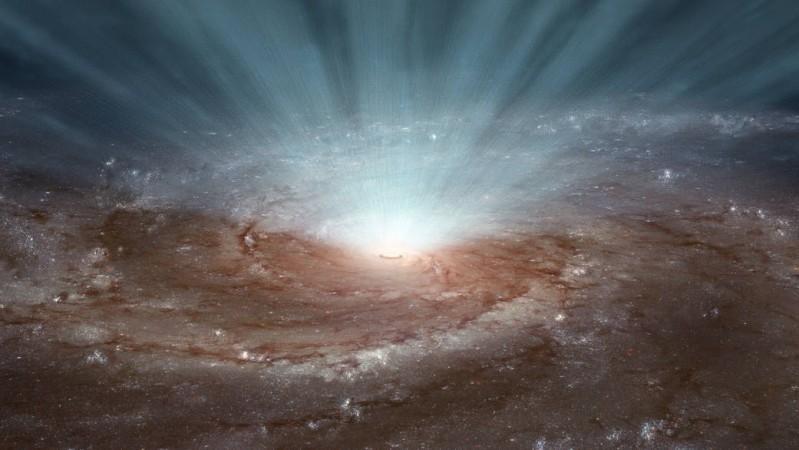
A new black hole has been discovered near the core of the Milky Way Galaxy by astronomers from Japan's Keio University.
Here are the top 5 things about this newly spotted black hole:
- Located at a distance of 200 light years away from the heart of Milky Way Galaxy, this black hole was detected by Japanese astronomers with the help of Atacama Large Millimeter/submillimeter Array (ALMA) Observatory located in northern Chile.
- This significant finding is identified as intermediate-mass black hole (IMBH). It is the second largest black hole found in the Milky Way after Sagittarius A* (Sgr A*) which is likely to help scientists unveil various mysteries revolving around the formation of such mysterious objects. The astronomers were analysing a massive cloud of toxic gas which was spinning around the centre of the galaxy. A strange motion of the cloud pointed towards the presence of a compact object which was believed to be a black hole.
- Astronomers believe that huge galaxies like ours contain black holes which could be billion times bigger than Sun. The researchers have been trying to find out what leads to the formation of these celestial objects. The discovery of this black hole is likely to help them solve the mystery.
- The IMBHs refer to a hypothetical class of black hole which is formed when small black holes move together to form supermassive ones.
- According to nature.com: "One possible scenario is that IMBHs, which are formed by the runaway coalescence of stars in young compact star clusters, merge at the centre of a galaxy to form supermassive black holes."
"Further detection of such compact high-velocity features in various environments may increase the number of non-luminous black hole candidate and thereby increase targets to search for evidential proof of general relativity. This would make a considerable contribution to the progress of modern physics."

















